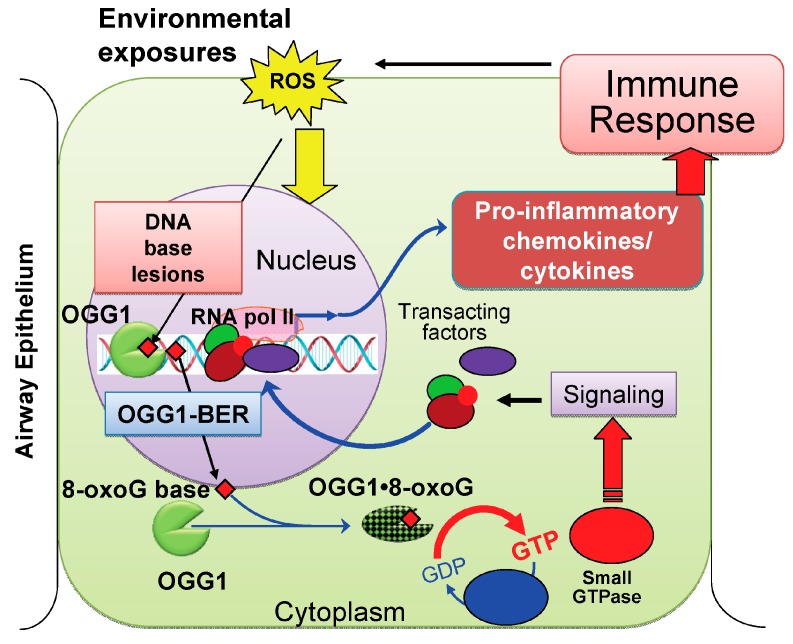Figure 7.
A proposed model for lung inflammation by repair of oxidatively damaged DNA via OGG1–BER. When environmental exposures occur or during an inflammatory process, Reactive oxygen species (ROS) are generated by cellular oxido-reductases and mitochondrial dysfunction in the airway epithelium. Due to guanine’s lowest oxidation potential, the most frequent base damage in DNA is 8-oxoG, which needs to be repaired to prevent mutations. 8-OxoG base is released by OGG1–BER (Figure 1) and transported to the cytoplasm, where it is bound by OGG1, and the resulting complex (OGG1·8-oxoG) functions as a guanine nucleotide exchange factor and mediates GDP→GTP exchange. Activated small GTPase(s) signal expression of pro-inflammatory genes, which induce an innate immune response. Recruited inflammatory cells induced ROS, DNA damage and repair that may lead to a vicious cycle of OGG1·8-oxoG→RAS–GTP→inflammatory signaling, maintaining chronic inflammation.

